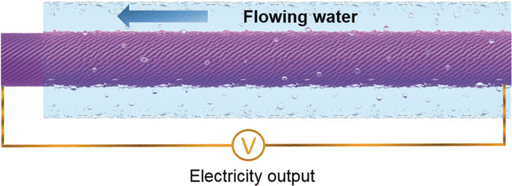By Warren Miller, contributing writer
As the world’s resources continue to shrink and the search for renewable and sustainable energy sources expands, could the human body be the next frontier? Research around the world suggests that it could, using the power generated by the bloodstream to charge cellphones or other portable electronics. Just imagine it… you may never have to worry about leaving your phone charger in your hotel room again.
A team of researchers at Fudan University in China recently conceived a microscopic generator that can theoretically convert the energy created by the flow of blood through our veins and blood vessels into electricity in much the same way that a hydroelectric dam converts the flow of water into power. Although they’ve yet to test it in a human body, the generator would be stationary in a dedicated location in the body, and, therefore, not a danger to float around in your blood vessels until it gets stuck or causes a blood clot. The fiber-shaped fluidic nanogenerator, or FFNG, was able to retain 20% of the power generated in a flow of saline solution, according to researchers.

Image source: Fudan University.
A grad student in Jerusalem might have those researchers beat, however. Naomi Kizhner claims to have created a line of jewelry that attaches itself to your veins like an IV and draws power from blood flow and eyelid movement. Although it was designed as more of an experiment than as a foray into the commercial jewelry market, it’s still an interesting look into our ever-entangled relationship with technology.
It seems that the drive to low-powered electronics has now made it possible to find power sources from previously unimaginable sources, at least outside of the movies. Just about any source of heat, pressure, movement, electromagnetic flux, or light can now power our next wave of ultra-low power electronic systems. With improvements in battery technology, energy storage will be available in ultra-small form factors with much-improved energy density. This creates a potential perfect storm of innovation in electronics devices and systems.
Where could this type of innovation take us? There’s an undeniably Matrix-y feel to it all, like we’re headed toward a dystopian future in which human beings have all become batteries that allow their machine overloads to survive. When you consider how finite the planet’s natural resources are, however, and accept just how dependent on devices powered by electricity we’ve all become, it would be unwise not to investigate whether or not we can provide a little of the energy we need ourselves. The human body would make a useful battery when you think about; it’s always recharging itself and you can never leave it behind.
Advertisement
Learn more about Electronic Products Magazine





